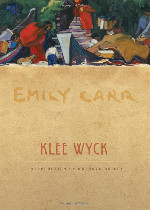
Klee Wyck (1941) is a memoir by Canadian artist Emily Carr. Through short sketches, the artist tells of her experiences among First Nations people and cultures on British Columbia's west coast. The book won the 1941 Governor General's Award and occupies an important place in Canadian literature. Carr was an avid traveller, and explored much of the west coast of British Columbia in her lifetime. She related some of her experiences on western Vancouver Island, Haida Gwaii, and on the Skeena and Nass Rivers are related in this first book.
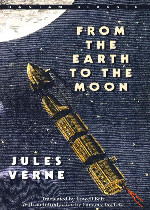
From the Earth to the Moon(从地球到月球) 立即阅读
From the Earth to the Moon (French: De la terre à la lune) is an 1865 novel by Jules Verne. It tells the story of the Baltimore Gun Club, a post-American Civil War society of weapons enthusiasts, and their attempts to build an enormous Columbiad space gun and launch three people—the Gun Club's president, his Philadelphian armor-making rival, and a French poet—in a projectile with the goal of a moon landing. The story is also notable in that Verne attempted to do some rough calculations as to the requirements for the cannon and, considering the comparative lack of any data on the subject at the time, some of his figures are surprisingly close to reality.

A collectior of 24 short stories: The World and the Door; The Theory and the Hound; The Hypotheses of Failure; Calloway's Code; A Matter of Mean Elevation; Girl; Sociology in Serge and Straw; The Ransom of Red Chief; The Marry Month of May; A Technical Error; Suite Homes and Their Romance; The Whirligig of Life; A Sacrifice Hit; The Roads We Take; A Blackjack Bargainer; The Song and the Sergeant; One Dollar's Worth; A Newspaper Story; Tommy's Burglar; A Chaparral Christmas Gift; A Little Local Colour; Georgia's Ruling; Blind Man's Holiday; and Madame Bo Peep of the Ranches.

Herland is a utopian novel from 1915, written by feminist Charlotte Perkins Gilman. The book describes an isolated society composed entirely of women, who reproduce via parthenogenesis. The result is an ideal social order: free of war, conflict, and domination. It was first published in monthly installments as a serial in 1915 in The Forerunner, a magazine edited and written by Gilman between 1909 and 1916, with its sequel, With Her in Ourland beginning immediately thereafter in the January 1916 issue. The book is often considered to be the middle volume in her utopian trilogy; preceded by Moving the Mountain, and followed by, With Her in Ourland. It was not published in book form until 1979.
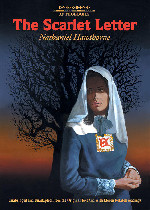
The Scarlet Letter: A Romance, an 1850 novel, is a work of historical fiction written by American author Nathaniel Hawthorne. It is considered his "masterwork". Set in 17th-century Puritan Massachusetts Bay Colony, during the years 1642 to 1649, it tells the story of Hester Prynne, who conceives a daughter through an affair and struggles to create a new life of repentance and dignity. Throughout the book, Hawthorne explores themes of legalism, sin, and guilt.
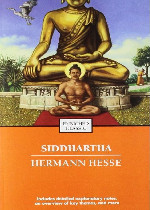
Siddhartha is a novel by Hermann Hesse that deals with the spiritual journey of self-discovery of a man named Siddhartha during the time of the Gautama Buddha. The book, Hesse's ninth novel, was written in German, in a simple, lyrical style. It was published in the U.S. in 1951 and became influential during the 1960s. Hesse dedicated the first part of it to Romain Rolland and the second to Wilhelm Gundert, his cousin.
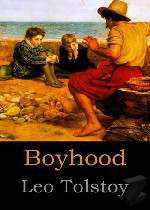
Written from 1852 to 1856, this autobiographical novel was Tolstoy's first publication. The early life of Nikolai, the son of wealthy landowner in Russia, is fully explored, slowly revealing this young boy's inner mind, relationships, and social standing. As he describes his tutor, angelic mother, aloof father, worldly brother, and later his moralistic friend, Nikolai displays a mind given to dreaming and a personality as complex as it is conflicted. As he grows and moves from his country home to his grandmother's mansion in Moscow, Nikolai also struggles at intervals to find a sort of moral balance, which affects his love, his education, and the type of man he might become.
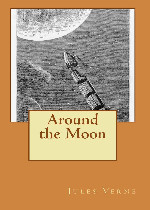
Around the Moon (French: Autour de la Lune, 1870), Jules Verne's sequel to From the Earth to the Moon, is a science fiction novel which continues the trip to the moon which was only partially described in the previous novel. It was later combined with From the Earth to the Moon to create A Trip to the Moon and Around It. From the Earth to the Moon and Around the Moon served as the basis for the film A Trip to the Moon.
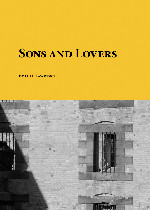
Sons and Lovers is a 1913 novel by the English writer D. H. Lawrence, originally published by B.W. Huebsch Publishers. The Modern Library placed it ninth on their list of the 100 best novels of the 20th century. While the novel initially received a lukewarm critical reception, along with allegations of obscenity, it is today regarded as a masterpiece by many critics and is often regarded as Lawrence's finest achievement.
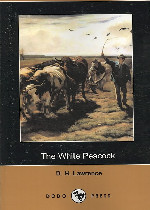
THE WHITE PEACOCK, published in 1911, Lawrence started the novel in 1906 and then rewrote it three times. The curly versions had the working title of Laconia.It involves such Lawrcnrian themes as the damage associated with mismatched marriages, and the border country between town and country. A misanthropic gamekeeper makes an appearance, in some ways the prototype of Mellor's in Lawrence's last novel, Lady Chatterley's Lover. The book includes some notably description of nature and the impact of inclustrialisation on the countryside and the town.